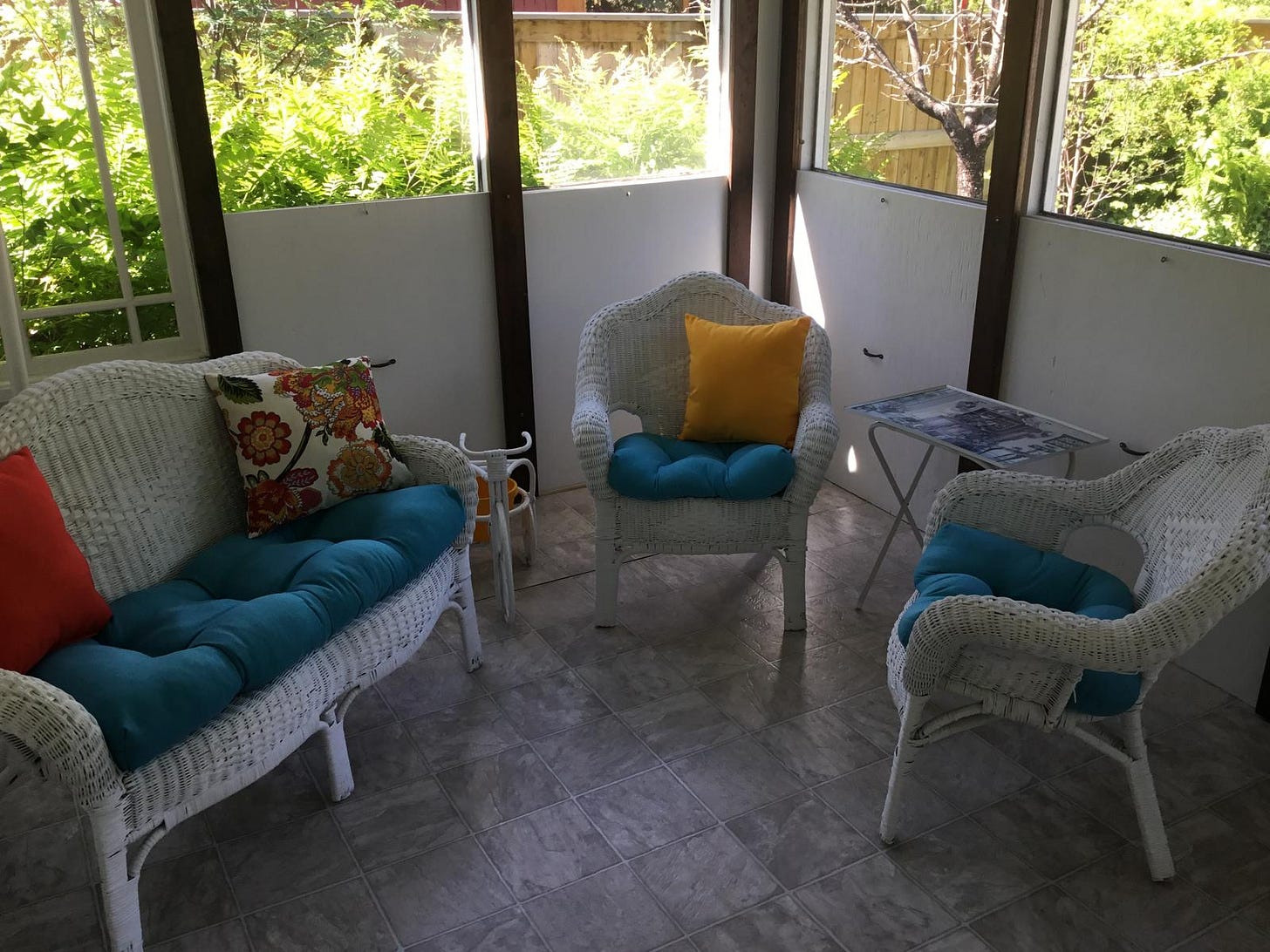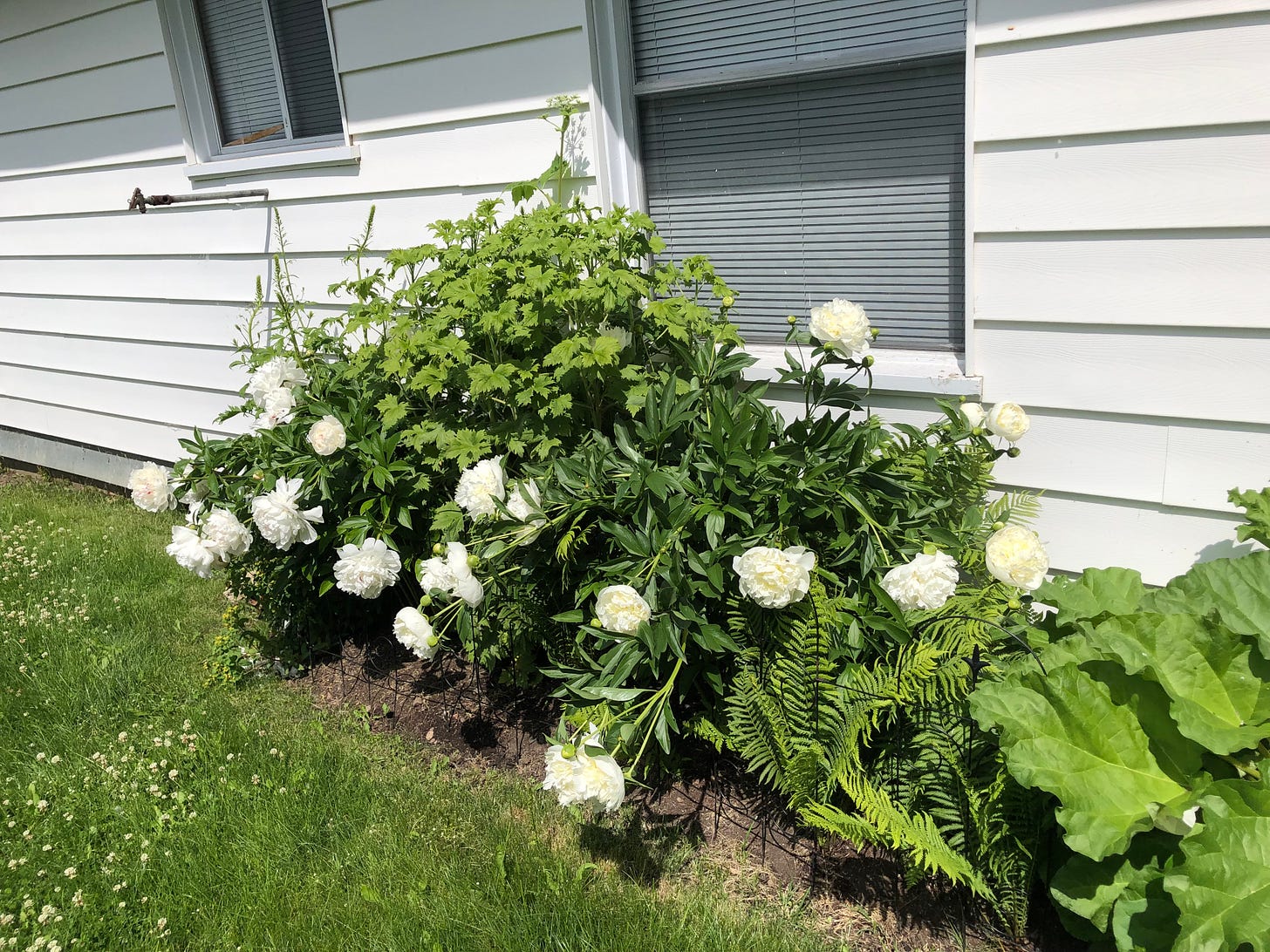Connecting Planners to Their (Park) Senses - Part III: The Sisterhood of the Travelling Peonies (February 4, 2025)
Sensory Storytelling
Vlog Overview
"Parks and Like Icebergs" (PALI) is an exploration of various aspects related to municipal parks, including urban parks planning and subsequent park service operationalization. The synergy of processes between the two is integral to the creation of sustainable cities. The vlog marries my extensive experience as a parks practitioner for over 30 years with a PhD in parks planning decision-making in Edmonton Alberta, my Phd in park land decision-making using institutional theory, as well as teaching parks planning at the University of Alberta. The vlog's intended audience is quite diverse and includes elected officials, planning professionals, landscape architects, community engagement practitioners, recreationists, academics, and community social actors. I have a Phd also in sarcasm, and like to use self deprecating humour, not to mention lots of adjectives and adverbs.
If there is one overriding theme inherent in my vlog, it is this! Park planning and park service operationalization policy practices are structurally integrated AND nuanced at both the macro and micro level. Process matters. Context matters. Knowledge transfer matters. Transparency matters.
Todays Ice Sculpture: The Sisterhood of the Travelling Peonies
This is the final part of the sensory storytelling trilogy. I first introduced you to such a story about Heritage Wetlands and Canada Geese, called “Natures Jake Breaks.” Part II was a fullsome description of sensory storytelling as a technique, and a summary of how our senses apply to Part I story. Part III, this Ice Sculpture, is a story of my families experiences at a recreational property at Floatingstone Lake, Alberta, near St. Paul, Alberta, called the “Sisterhood of the Travelling Peonies.”
The Sisterhood of the Travelling Peonies
We were introduced initially on August 15, 1992. It was a hot hot hot hot, followed five days later a heavy white blanket of snow, whose loose structure dampening what little noise there was, and cloaking the tall leafy columns in white. The blanket buried a rich colourful diversity of activity, for the moment anyway. The tall leafy columns silently groaned, and leaned forward to touch their toes, and waited. The elders had resilience and knew how to survive. They would soon snap to alert, waving hello while releasing their white burden, welcoming us into their community. Like them, we too sought a place to release the burdens of a young families busy life, shrouded in toxic clouds of grey and yellow, and putrid smells. This new community, in ways that we could not imagine at that time, was our escape from those urban burdens.
Each weekend as we travelled to visit our new friends, the frowns in my rear view mirror turned upside down. The chatter in our metal box increased. Upon arrival, we repealed the same ritual, a kind of wellness check. Did our friends need to be pruned? Deadheaded? Watered? Did bugs, deer or moose eat them? How full are our rain barrels? Have the dandelions executed its lawn coup? We excitedly spilled out into the yard.
New green friends joined our community every year, like waves on a beach, each with a story. The pine trees I brought back from an Ontario natural areas conference at the University of Guelph in 2000 reach for the stars in our home in our backyard. My daughters grade one tree arrived in the back yard. My sons grade one tree arrived later, a lodgepole pine, in the front yard. Both trees are flourishing like them, all now 30+ years old. A few years later smaller plant orphans began arriving when one my daughter was employed at a commercial greenhouse in the early 2000s.
The bergenias were a favourite of my mums flower garden in Ontario, planted by my wife. Lillies, ferns, goldenrod filled the space, transferred from the city to the lake. They rest in a garden refreshed often with compost, peat and new soils. Purple delphiniums, columbines and petunias bring along with them feathered friends, heard before seen.

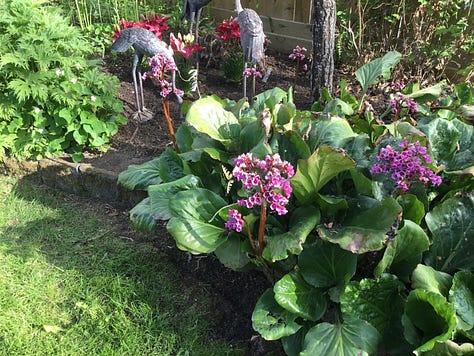

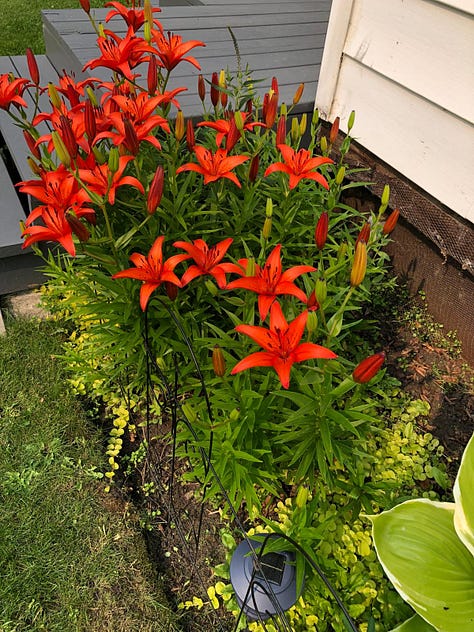
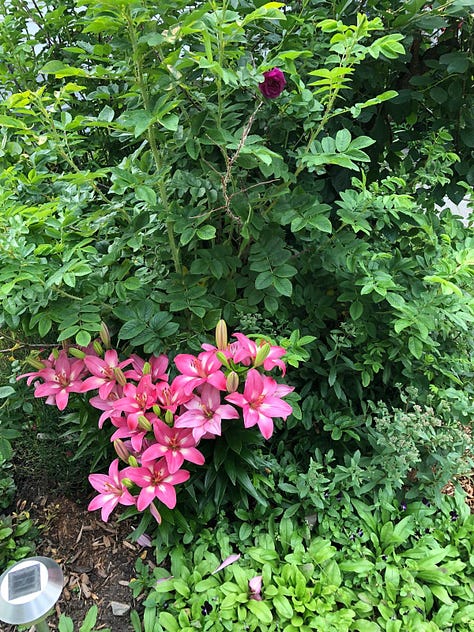

If we were lucky, our most treasured almost silent friends would visit. We would hear them before we saw them, and freeze in place. Picture taking of these darting tiny feathered friends is generally not successful unless armed with special skills, tools and enormous patience like our friend Peter… who supplied us with this picture.
Our new animal friends, always around, would introduce themselves to us and our plant friends, as they got to know us, knowing we would not harm them. We would chat with them, protect and nurture them, even the chattering squirrels who wanted no help.
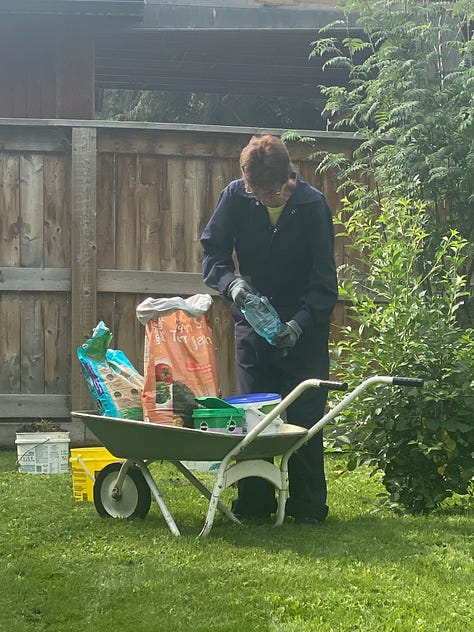
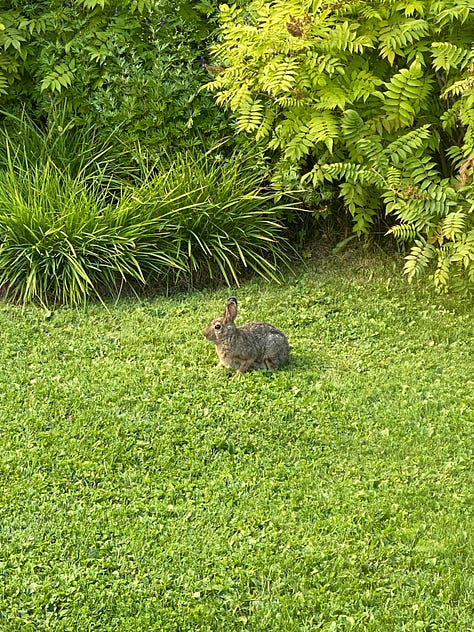
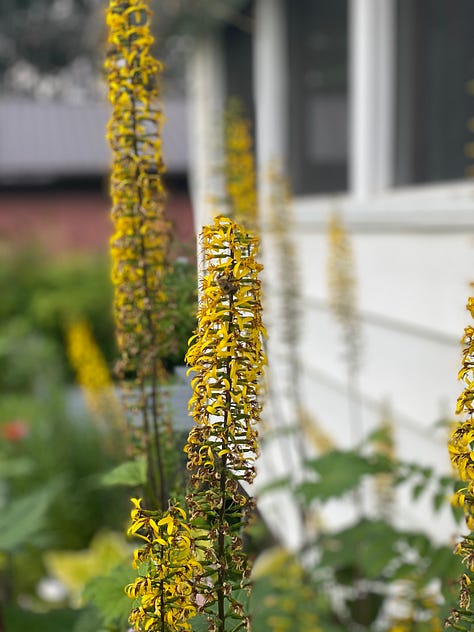

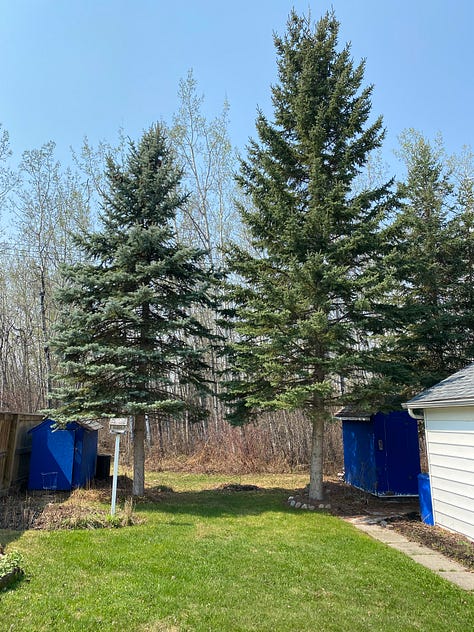

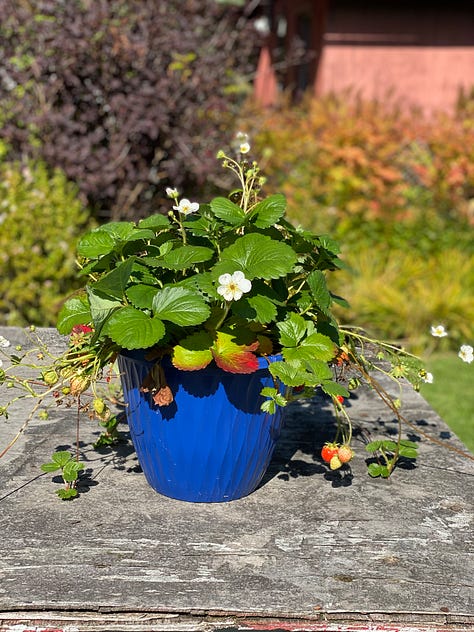

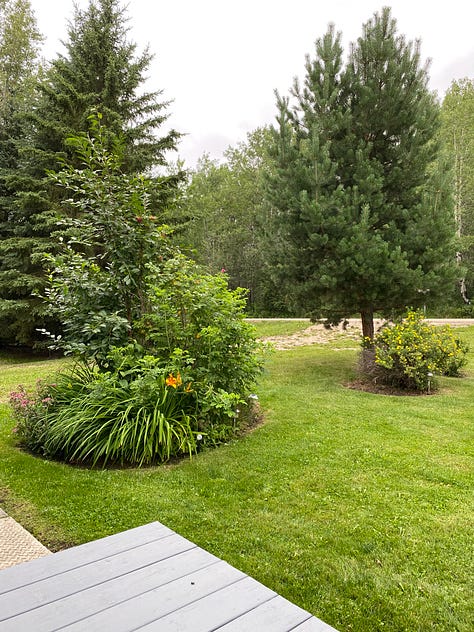
After our walkabout, we enter our rustic shanty, filled with an eclectic collection of 60s and 70s panelling, and old furniture, including a kitchen table, and an old badly worn chair under a window I have claimed as my own. Couches were imported in 1992 that were among the first furniture purchases my wife and I made when we married in 1984. They were from a clearance centre, complete with a broken arm. Yet 40+ years later it remains, the broken arm never repaired.
The couches were venue where we watched an untold number of movies in the evening, munching on popcorn, peanuts and chips, and chowing down on the tube steaks, we roasted on our backyard fire pit. My daughter would invariably take the first sip of every can of pop I opened for me. I would play fight wth my daughter over who would owned the love seat at movie time. I still do that, even when she is not there, and say “ha ha … I won again.” We would have all our meals on a retro table and chairs pictured earlier where we would play Rako, Scrable, Sorry, and did crossword puzzles, etc. The winners always poked fun at the losers. Each night would end with a trip to the outdoor biffy, and hug for each, a family tradition that continues today.
The rear of the cabin has a covered porch, my wife populated with wicker furniture she purchased and restored, from a yard sale. My wife reads novels, war stories her father a WWII veteran would have loved. She does crossword puzzles, watches for our flying, walking and hopping friends, and absorbs warmth on a sunny day. She is solar powered. Its her favourite place, in her favourite location. From this perch, you hear the hummingbird and find them feeding from our delphiniums, or pileated woodpeckers destroying a nearby cherry tree, yet only looking for its own sustenance. We share this porch with our night time flying mosquito munching bug collectors. In wild storm events, the kids and I laid on the floor and listened for the gusting winds, and watched the tall trees sway back and forth in unison.
At the end of each weekend, as I would head back to work into the city, we would all walk down the municipal campground beach. I would leave them encamped on the sandy beach. The smell of fire pits, hot dogs and hamburgers, children happy squeals filling the air, we mingled with campers, and families from a nearby indigenous reserve. The toxic fumes and activities far from our minds…
Time marches on. Our long time neighbours either aged out or were forced to leave due to illness. All had the same love of nature. We are now an outlier, too often lost in a cloud of toxic quad fumes and noise, trashing the silence and experiences. Its no longer the place we remembered where our kids were turned out into the nearby bush to play, and learn about nature. My wife and I are also now ageing out, now unable to keep up with the rigours of our cabin rituals and on-going repairs. Its the cycle of life. We too must leave our sanctuary.
Somehow we must value the property. We must reduce a lifetime of experiences down to a black and white piece of paper, with a random number code we can’t recite after 3+ decades, defined by dimensions, our shanty in the middle, an assigned tax roll number and assessed value. What is its value? Its not a ($) number. How to articulate or encapsulate a lifetime of memories and value? The aforementioned silent maraders and white peonies…
My wifes grandparents came to Canada about 100 years ago. In the 50s and 60s they lived in Edmonton and planted white peonies in their garden, doted over by her Nana who was an avid gardener. Her daughter, my mother-in-law, also an avid gardener, transplanted roots from those peonies to a farm they purchased in the early 70s near Newbrook Alberta. When the farm had to be sold some four decades later to make way for roadway expansion, initially the white peonies were left behind. But soon after the sale, those same root ancestors journeyed to the cabin. My wife and daughter carefully uprooted some the peonie roots from the Newbrook farm in about 2014. (Multiple generations of apples not falling far from the gardening tree.) I drove the getaway car, joining this flora theft syndicate. If a Hollywood movie were made about our experiences at cabin with our friends, the title of ours would be -“The Sisterhood of Travelling Peonies.”
The hummingbirds and peonies represents metaphors for all that we valued in our life - family, plants, animals, history, etc - much more than we could ever imagine when we arrived for the first time. Wave after wave of new friends arrived each year, and will be left for others to enjoy, but bereft of the stories behind each one. As we leave, we grieve, but very much richer for our time there, much more than a sales receipt will ever capture.







